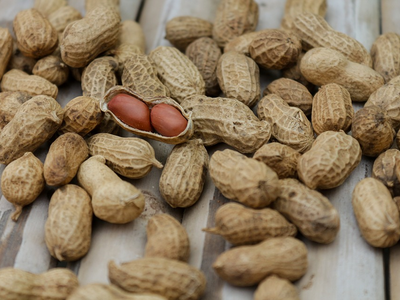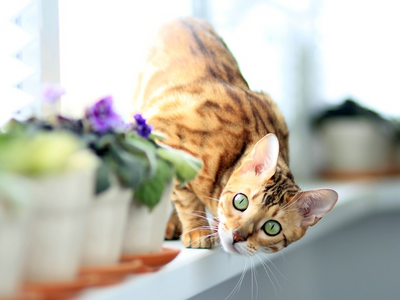20.03.2022
How often should I feed my kitten? Once a day, or food on tap?
A new kitten in the house isn’t as stressful as a newborn baby, but it’s a close-run thing.
Whether or not you are a first-time cat parent, a new kitten will soon become the dominant life form in your household, with your every move being planned around feeding, nurturing, and protecting the little one.
Some of the worries are what food to offer and how much your kitten needs to ensure healthy growth and happiness.
The question, “How often should I feed my kitten?” is probably at the forefront of your mind as the person on whom your new furball is dependent. No worries, Untamed has all the kitten facts you need!

The feeding adventure begins!
Source: Pixabay
How many times a day should you feed a kitten?
Kittens will normally suckle until they are around five weeks old, at which time they can be gradually introduced to kitten food mixed with kitten milk replacer (KMR) formula.
By the time kittens leave their mother, they are usually around six to eight weeks old and should have been weaned.
While they have learned most of the basic skills they need to survive, they are still at an early stage in their development and need to eat frequently to maintain a healthy growth rate. You should make sure your kitten eats regularly, and the following feeding frequency should ensure you don’t run into problems:
|
Kitten age |
Number of meals per day |
|
Birth |
6 |
|
Two weeks |
4 |
|
Three weeks |
3 |
|
Eight weeks |
2–3 |
|
Ten weeks onwards |
2 |
Some vets advocate ad libitum feeding, or the constant availability of food, for kittens up to adulthood, allowing them to eat whenever they are hungry. This is akin to the way they suckle, but you may run the following risks:
- Contamination and illness
- Difficulty changing to fixed meal times
- Weight issues in later life
Contamination and illness
Food—particularly raw, wet, and semi-moist varieties—can spoil or become contaminated if left out in the open air (think raw chicken). This can lead to gastrointestinal problems in kittens, including:
- Nausea
- Vomiting
- Diarrhoea and stomach sensitivity
Even after acute gastrointestinal issues have passed, you may notice that your feline associates certain types of food with feeling sick. Your kitten may refuse wet food or become fussy and sensitive as a result of a single stomach upset.
You can avoid these dangers by offering kibbles, but some kittens find dry food difficult to eat. Dry meals can be made more palatable by mixing them with either wet food or warm water, but this involves a lot of work to keep the food bowl full. Biscuits are also a subpar alternative because they tend to contain low-quality ingredients and lack moisture.
Difficulty changing to fixed meal times
Once a kitten has become used to food being available 24/7, any attempt to change to two meals a day when entering adulthood may be met with a barrage of begging.
Cats of all ages love routine, and disruptions can cause stress—the first indication of which is a refusal to eat and subsequent rapid weight loss. This can lead to major health problems and even prove fatal if undetected.
Weight issues in later life
Ad libitum feeding may be easy for cat parents to manage, but controlling your cat’s calorie intake is challenging with this method.
Cat parents typically top up the feeding bowl when its level dips, making it difficult to work out how much has been eaten.
Weight gain is a gradual process, and you may not notice your adult cat slowly filling out until it is too late. Carrying excess poundage can have serious health implications in adult cats, including:
- Diabetes and pancreatitis
- Mobility and joint issues, such as arthritis
- Heart problems
The frequency in which your kitten eats can have long-term consequences. Your best course of action is to start with up to six fixed meals each day and gradually reduce these to two by the time your kitten is three months old.

“Is it dinnertime yet?”
Source: Pixabay
Why is kitten feeding frequency so important?
Kittens need to eat often due to the incredible rate at which they have to grow. From birth, kittens should double their weight every two weeks, as in the following chart:
|
Kitten’s age |
Approximate weight |
|
Newborn |
100 g |
|
Two to three weeks |
170–225 g |
|
Four to five weeks |
225–450 g |
|
Eight weeks |
680–900 g |
|
12 weeks |
1.2–1.5 kg |
|
16 weeks |
2–4 kg |
|
18 weeks up to 12 months |
Between 3 and 5 kg |
To achieve this, kittens need a vast amount of calories, which only decreases as they reach the age of around eight months.
Typical calorie requirements per 100 g of body weight for kittens are:
|
Kitten weight |
How many calories are needed per day |
|
100 g |
31 kcal |
|
200 g |
52 kcal |
|
300 g |
88 kcal |
|
400 g |
104 kcal |
|
900 g |
162 kcal |
|
1.4 kg |
225 kcal |
|
1.8 kg |
272 kcal |
|
2.3 kg |
327 kcal |
|
2.7 kg |
369 kcal |
|
3.2 kg |
419 kcal |
|
3.6 kg |
457 kcal |
|
4.1 kg |
504 kcal |
|
4.5 kg |
541 kcal |
The biggest issue with this is that kittens have:
- A tiny stomach
- A not-fully-developed digestive system
How tiny is a kitten’s stomach?
A kitten’s stomach is about the same size as a walnut and can only take small amounts of food at one go.
The maxim is “little and often” to avoid overfeeding and causing discomfort due to the stomach being bloated.

Small, regular meals keep your kitten’s energy levels high enough for outdoor adventures
Source: Pixabay
When does a kitten’s digestive system develop?
Kittens’ digestive systems become fully functional after about four months.
Before that, kittens are highly susceptible to stomach issues. If you consider that their independent immune system is also still developing, you realise the importance of not exposing your kitten to any risk of digestive problems due to eating too much in one go.
The most important phases in a kitten’s development are:
- Between 6 and 8 weeks—This period is known as the immunity gap. This is the time during which the queen‘s milk no longer delivers enough immune support to guarantee protection, but the kitten’s independent immune system has not yet developed enough to be a safeguard against infection. In this period, you should make sure that your kitten gets the healthiest nutrition possible to fight off any illnesses that may crop up
- From 2 to 4 months—Your kitten goes through a significant growth spurt between 2 and 4 months. As a kitten’s body prepares itself for adulthood, the calorific requirement is between 140 g and 180 g per kilogram of weight. Since the feeding frequency will decrease to two meals a day, each meal has to be energy-dense enough to make sure the growth is supported adequately

“Feed me, or I’m gonna EAT YOUR DAISIES!!!!”
Source: Pixabay
Can you ignore kittens‘ eating habits and feed less?
Underfeeding a kitten is a risky thing to do. Any developmental issues a kitten experiences through undernourishment can have long-term consequences, such as:
- Bone and joint malformation
- Organ or glandular underdevelopment
- Hepatic lipidosis
- Behavioural problems
Bone and joint malformation
Insufficient nutrition can lead to structural elements not forming properly in kittens. As a result, your adult cat may experience difficulty with agility, which could lead to:
- Arthritis
- Lethargy
- Weight problems
Healthy bones and joints are the key to a happy and active life through adulthood and into your cat’s senior years.
Organ or glandular underdevelopment
If the major organs or glands don’t develop properly during kittenhood, your cat’s later quality of life could be compromised.
The organs and glands that could be affected include:
- Heart, leading to later cardiovascular problems
- Skin and coat, meaning your cat may become more susceptible to shedding, hairballs, and protein allergies
- Pancreas, thyroid, and pituitary glands, potentially leading to early-onset diabetes, hyperthyroidism, and urinary tract infections (UTIs), such as cystitis or bladder stones
- Kidneys and liver
Hepatic lipidosis
If a cat is forced to start mobilising fat reserves due to undernourishment, fat can begin to pile around the liver. Known as hepatic lipidosis, this syndrome can seriously affect liver function and requires lengthy treatment and a special diet to help your cat recover.
Behavioural problems
You want your kitten to be loving, playful, and up for regular cuddles.
While cats are predators, they can also be prey in the wild. Any apparent vulnerability can mark them as an easy target for larger hunters, so felines will instinctively hide away if they feel they are not 100% fit.
There may be a problem with undernourishment if your kitten is:
- Lethargic
- Unwilling to engage with you
- Constantly seeking hiding places and avoiding contact
Feeding the right calorific quantities is one of your biggest responsibilities as a kitten parent.
What should kittens eat?
How often you feed your kitten goes hand in hand with the quality of food on offer.
Kittens eat to satisfy their need for energy needed for their growth and development. As a rule of thumb, the lower the food quality, the more your kitten will need to consume to satisfy nutritional requirements.
As a cat parent, it is your job to offer the best possible nutrition, ensuring that your kitten gets everything necessary in small, concentrated portions.
Cats are obligate carnivores, so they need a meat-based diet to get the required:
- Amino acids from protein
- Fatty acids and secondary energy from fat
- Vitamins and minerals for healthy bodily functions
Amino acids from protein
Kittens and adult cats need certain amino acids—such as taurine—to grow and maintain:
- Muscles
- Organs
- Skin and coat
With such rapid growth, kittens need a diet rich in animal protein, enabling them to develop without having to gorge.
To illustrate the importance of meat in reducing the amount kittens have to eat at each sitting, you can look at the biological value (BV) of various animal and plant proteins. This measures the efficiency with which kittens can metabolise different proteins—the higher the percentage, the less a kitten needs to cover nutritional requirements.
The BVs of the most common protein sources in kitten food are:
|
Protein source |
Biological value |
|
98% |
|
|
94% |
|
92% |
|
|
87% |
|
|
68% |
|
Below 65% |
Feeding your kitten food based on any protein source with a BV of 90% or more will ensure the best nutritional value with the lowest necessary feeding amounts.
Cat foods that claim to be vegan or vegetarian should be avoided, particularly for kittens.
Fatty acids and secondary energy from fat
Fat, besides being a good secondary energy source, delivers the fatty acids a kitten needs to maintain healthy cell structure.
Animal fat is also irresistible to cats, meaning that your kitten will devour meals with appetising, fat-rich gravy or jelly.
Vitamins and minerals for healthy bodily functions
Kittens need a range of vitamins to develop healthily, including vitamins A, B complex, D, and E. One of the best sources for all the vitamins your kitten requires is liver, so any cat food that lists it as an ingredient should provide the necessary spectrum.
Minerals help with:
- Skeletal structure
- Chemical reactions in the body
Similar to vitamins, your kitten's mineral requirements will be met with a good source of meat in the food you provide.
Can Untamed help your kitten grow healthily?
The responsibility of being a kitten parent is huge, but Untamed has got your back with the best food for every stage of your feline’s life.
We understand the importance of wholesome, kitten-centric nutrition to make sure your furball grows up healthy and happy.
Untamed cat food is based on homemade recipes, honed and developed to be exactly what a growing kitten—or cat of any age—needs. By varying and tailoring your feeding frequency, you can ensure your kitten gets the calories and nutrients needed at each growth stage.
Our quality is what makes Untamed stand out from the plethora of cat food on the market. This quality is reflected in our commitment to:
- High levels of exclusively animal protein
- Vet-formulated recipes
- Human-grade ingredients
High levels of exclusively animal protein
With twice as much animal protein as most commercial cat foods, Untamed gives your kitten the nourishment that such rapid growth demands. All the protein in Untamed is animal-based, so your kitten will get a concentrated burst of grain-free nutrition in a small, easily digestible portion.
You can also rest assured that Untamed is free from known allergens and suitable for kittens throughout their growth.
Vet-formulated recipes
Untamed cat food has been formulated by vets to ensure your kitten gets the right balance of:
- Protein
- Fat
- Vitamins and minerals
- Calories
Human-grade ingredients
We think your kitten deserves the best, and what could be better than ingredients of the highest quality?
Every tin of Untamed is made from the best of the best, meaning your kitten should stay healthy and happy.
Untamed is also an ethical manufacturer because we use:
- Meat and fish sourced from sustainable, cruelty-free, and dolphin-safe suppliers
- 100% recyclable packaging
- Carbon-neutral manufacturing and shipping processes
New kitten in the house? Time to give Untamed a try and see how your kitten turns into a tiger!
Worried you don’t have enough food in the house?
Kittens need constant topping up with the best quality food.
Untamed is here to help, and we can make sure you always have enough to keep your kitten growing. All you need to do to start the Untamed journey is:
- Tell us all about your new kitten
- Pick a meal plan
- Order your first trial pack
Once your cat food trial pack arrives, your kitten can start enjoying our delicious meals—whether it’s Chocka Chicken, Tuck-In Tuna, or Full-On Fishy.
Every kitten is different, but, according to what our happy kitten parents report, you should expect the following after getting our healthy cat food subscription:
- After a week—Your kitten will be bouncing with energy and exploring every corner of your home
- Within two months—Growth should be steady, energy levels high, and digestion working optimally
- After four months—Your kitten should be maturing into a sleek, shiny energy-bundle
- For life—Your now-adult cat will be an endless source of fun, friendliness, and energy, with a trim figure and a life full of adventure

The Untamed range in a monthly meal pack.
Image (c) Untamed
What else should you look out for with your kitten?
Kittens are a huge responsibility, but you have already ticked a major box by making sure yours is getting the best nutrition.
Your parenting skills need to extend to keeping your kitten’s environment safe. Kittens are naturally curious, so it is up to you to make sure they don’t eat anything that could be harmful to them.
The list of foods to keep away from your kitten includes:
- Chocolate and cocoa products
- Allium vegetables, such as onions, garlic, and chives
- Citrus fruits and grapes or raisins
- Bread dough or products containing yeast
- Milk, cheese, and dairy products
- Macadamia nuts
- Alcohol or caffeine in any form
You may notice your kitten wanting to try a nibble of your banana, peas, pasta, or even apple. This is fine, as long as:
- It’s only a nibble
- You don’t let the habit turn the forbidden fruit into a complementary part of their regular diet

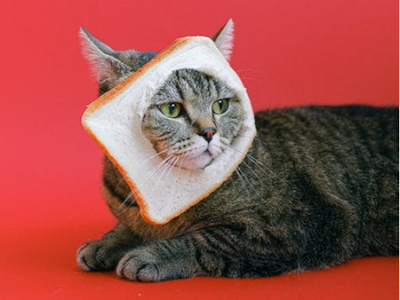
![Associated image for Best food for Ragdoll cats in the UK [Broken Down]](http://untamed.com/cdn/shop/articles/featured_best_food_for_ragdoll_cats_uk_400x300_crop_center.jpg?v=1646818249)
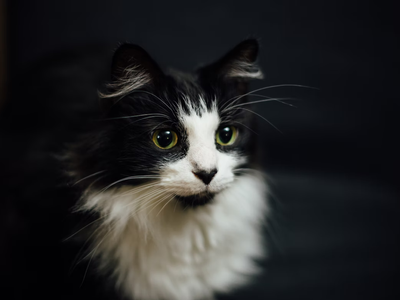
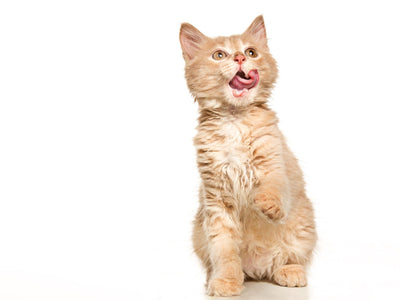
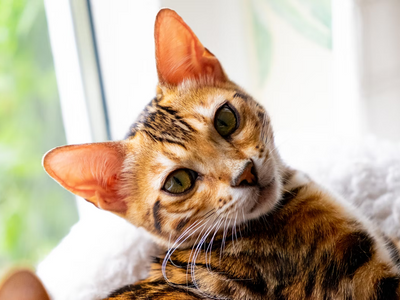
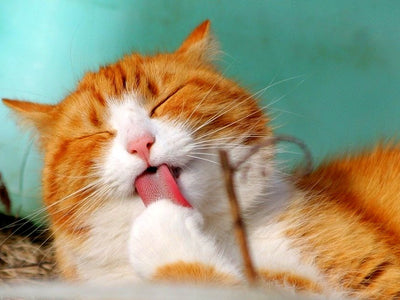
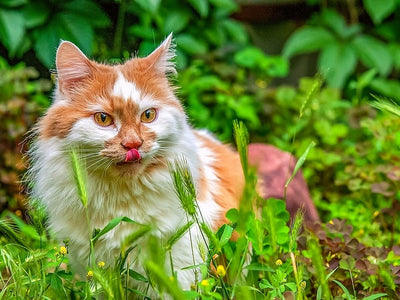
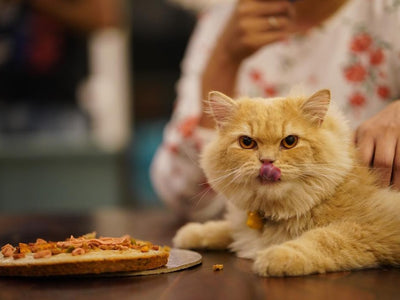
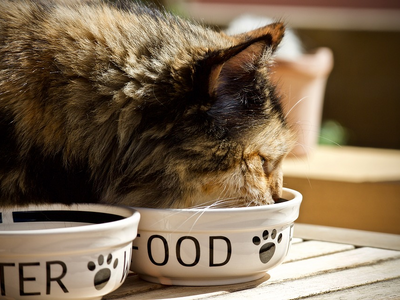
![Associated image for What human food can Sphynx cats eat? [Comprehensive list]](http://untamed.com/cdn/shop/articles/what_human_food_can_sphynx_cats_eat_Featured_400x300_crop_center.jpg?v=1648705074)
